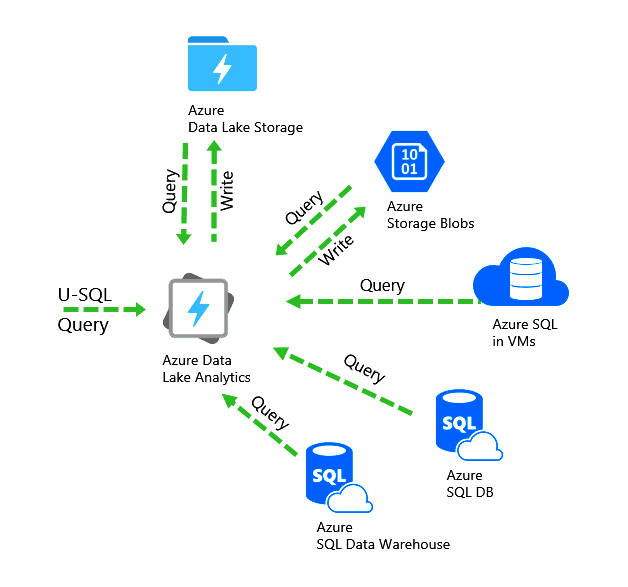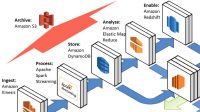Today’s data-driven society presents enterprises with the problem of maintaining and gleaning insightful information from vast amounts of data. Azure Data Lake Storage provides a scalable and cost-effective solution for storing, analyzing, and processing big data workloads in the cloud. It is a highly scalable and secure storage service offered by Microsoft Azure.
Features and Benefits of Azure Data Lake Storage
Azure Data Lake Storage offers several key features and benefits that make it a powerful tool for managing big data:
- Massive Scalability: Azure Data Lake Storage can handle petabytes of data, allowing organizations to scale their storage needs as their data grows.
- Data Lakes Architecture: It follows a data lakes architecture, which means it can store structured, semi-structured, and unstructured data in its native format.
- High Performance: Azure Data Lake Storage provides high throughput and low latency for data-intensive workloads, enabling faster data processing and analysis.
- Integration with Azure Services: It seamlessly integrates with other Azure services like Azure Databricks, Azure HDInsight, and Azure Synapse Analytics, allowing organizations to build end-to-end big data solutions.
- Security and Compliance: Azure Data Lake Storage offers robust security features, including encryption at rest and in transit, role-based access control, and integration with Azure Active Directory for identity and access management.
- Cost-Effective: It provides a cost-effective storage solution, allowing organizations to pay only for the storage they consume and easily scale up or down as needed.
Understanding Data Lake Architecture
Azure Data Lake Storage follows a data lakes architecture, which means it stores data in its raw form, without the need for pre-defined schemas. This architecture allows organizations to capture and store large volumes of structured, semi-structured, and unstructured data from various sources, such as IoT devices, social media, and logs. Data can be ingested into Azure Data Lake Storage in real-time or batch mode, making it a flexible solution for handling different data ingestion patterns.
Data Ingestion and Processing with Azure Data Lake Storage
Azure Data Lake Storage provides various mechanisms for data ingestion, including Azure Data Factory, Azure Event Hubs, and Azure Stream Analytics. These tools enable organizations to ingest data from diverse sources and formats into Data Lake Storage. Once the data is ingested, it can be processed using Azure services like Azure Databricks or Azure HDInsight, which provide powerful analytics capabilities for extracting insights from big data.
Security and Compliance in Azure Data Lake Storage
Data security is a top priority for organizations dealing with sensitive data. For the protection of data both in transit and at rest, Azure Data Lake Storage provides strong security measures. It supports encryption using Azure Storage Service Encryption (SSE) for data at rest, and Transport Layer Security (TLS) for data in transit. Additionally, it provides role-based access control (RBAC) to manage access to data, and integrates with Azure Active Directory for identity and access management.
Data Analytics and Insights with Azure Data Lake Storage
Azure Data Lake Storage serves as a foundation for advanced data analytics and insights. Organizations can leverage tools like Azure Databricks and Azure Synapse Analytics to perform data exploration, data wrangling, machine learning, and advanced analytics on the data stored in Data Lake Storage. These tools provide a rich set of capabilities for deriving valuable insights and making data-driven decisions.





